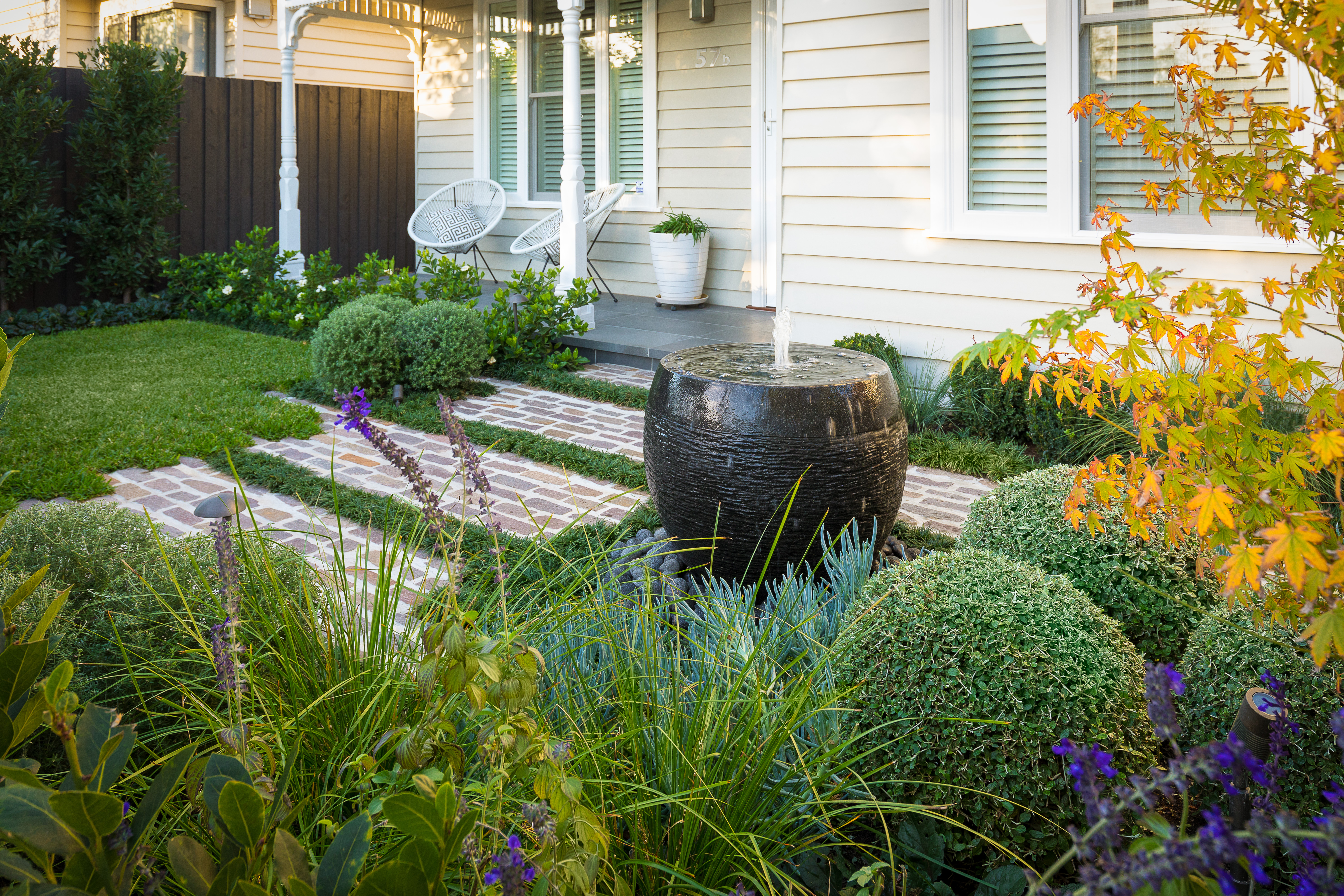
The classic front yard is a cliché — perfectly manicured lawn and pristine topiary isn't a reflection of the biggest transformations we've seen in landscaping in the past 10 or 20 years.
Today's take on yard design is informed by natural landscapes, and reflects a more organic approach to planting that not only is, arguably, better looking, but is better for the planet too. Ditching lawn for more wildlife friendly front yard landscaping ideas can transform local ecosystems and attract beneficial garden insects, birds and more.
However, for many people still, the idea of "naturalistic" planting strikes fear, especially if they live under the tyranny of a strict HOA, but as landscape designers prove time and time again in their front yard projects, there's a way to embrace the wildness of natural landscaping, without losing control. Here's how they achieve it.
How to create a natural front yard
Naturalistic planting is an idea that seeks to mimic the "organic compositions" of nature in a carefully considered landscaping design. 'By carefully selecting plants, arranging them thoughtfully, and maintaining a balance between scale and naturalistic aesthetics, it’s possible to achieve a beautiful naturalistic planting scheme in even a small front yard,' Adam Sexton, senior associate at Richardson & Associates Landscape Architecture, tells us.
1. Change your planting mentality
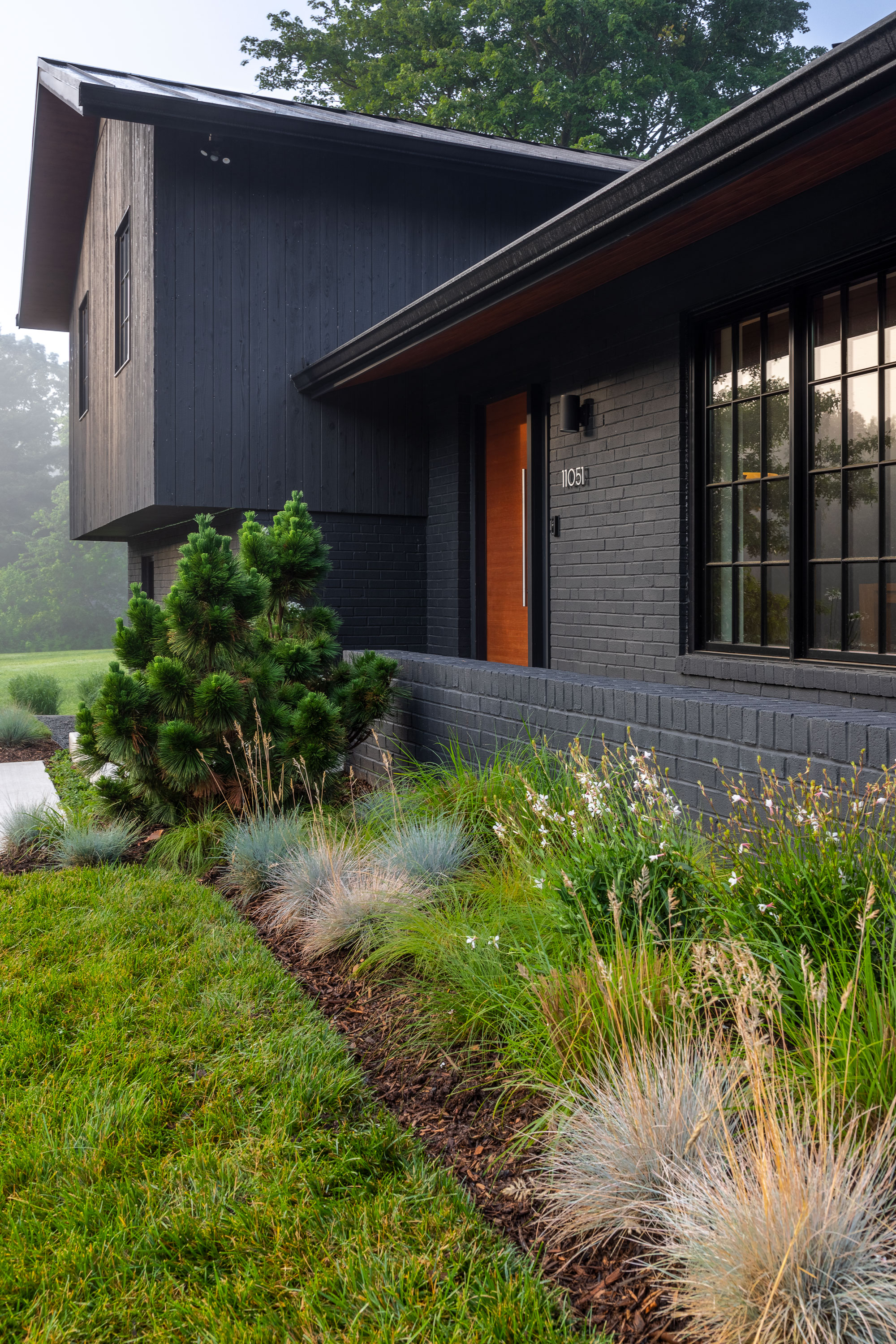
The biggest shift in designing a natural front yard is how you choose and position plants within it. However, while wilder and more organic in approach there are still planting rules you can use to help design your space in a way that feels structured and easy to plan.
'Use a 'matrix' planting style that intermixes 2-3 species at each layer of planting,' says Jordan Clough, associate principal at Richardson & Associates Landscape Architecture. Matrix planting is a concept that sees gardeners use plants at different layers to fill different requirements — but that work together in harmony, both above and below ground. It's a style of planting that has a wilder appearance, but is carefully considered. Not to mention it can help use water more conservatively, and also discourage weeds filling in the gaps you might otherwise find in your front yard flower beds.
2. Soften the hard elements
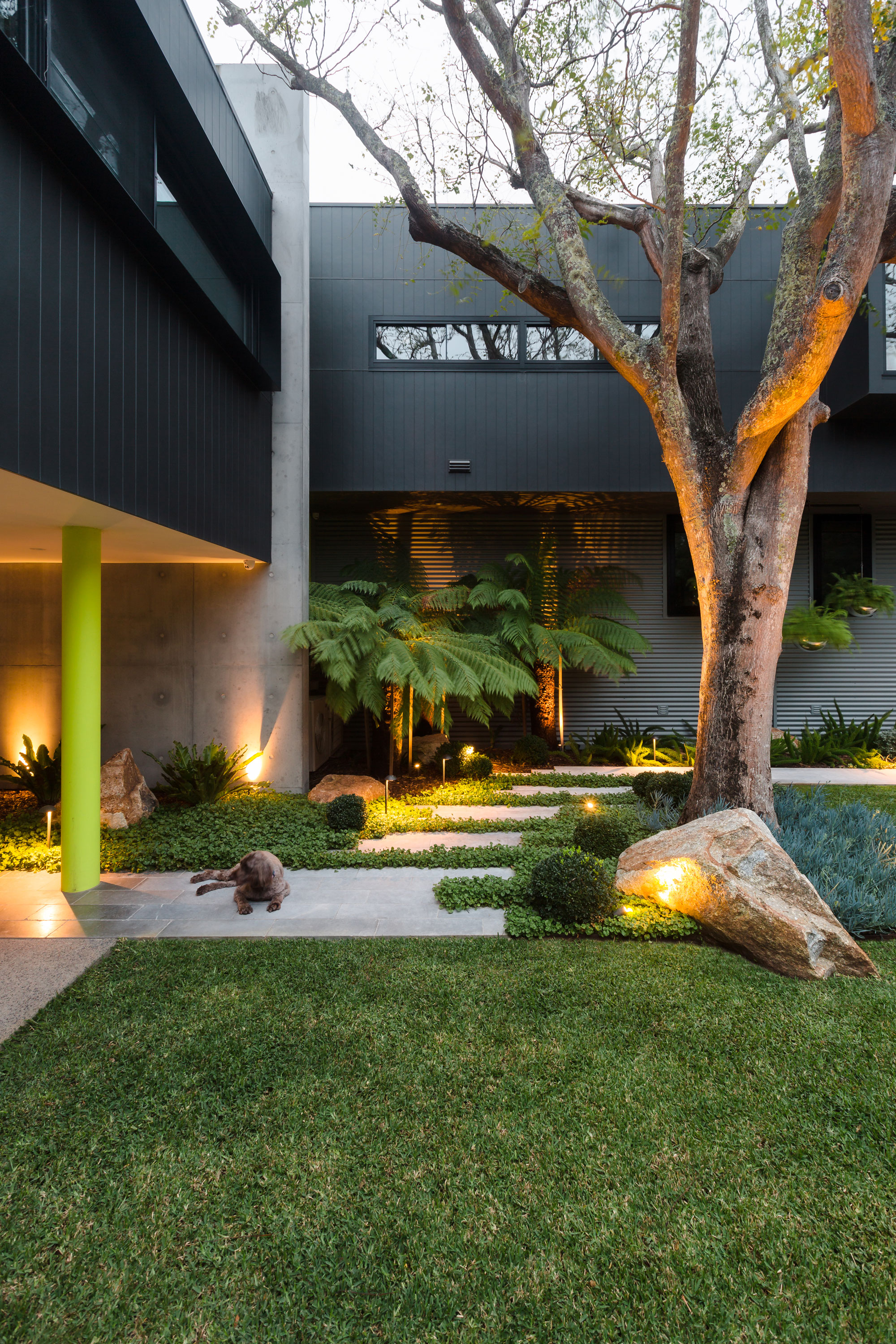
Modern front yards tend to include hard, linear elements like concrete or paving. While a gravel base might be softer and more appropriate for a natural look, there are brilliant ways to make these industrial elements feel less imposing and create striking contrast through planting.
For this front yard, a sprawling walkable groundcover plant helps give a paved garden path a more organic look. 'It was both a practical or aesthetic choice,' says Steve Taylor, Managing Director of COS Design. 'We have used dichondra repens to soften the hard elements and also supress weeds in the informal paved areas. The driveway was quite dominating so the dichondra has helped soften the mass of hard surfaces,' he says.
3. Avoid repetition and symmetry
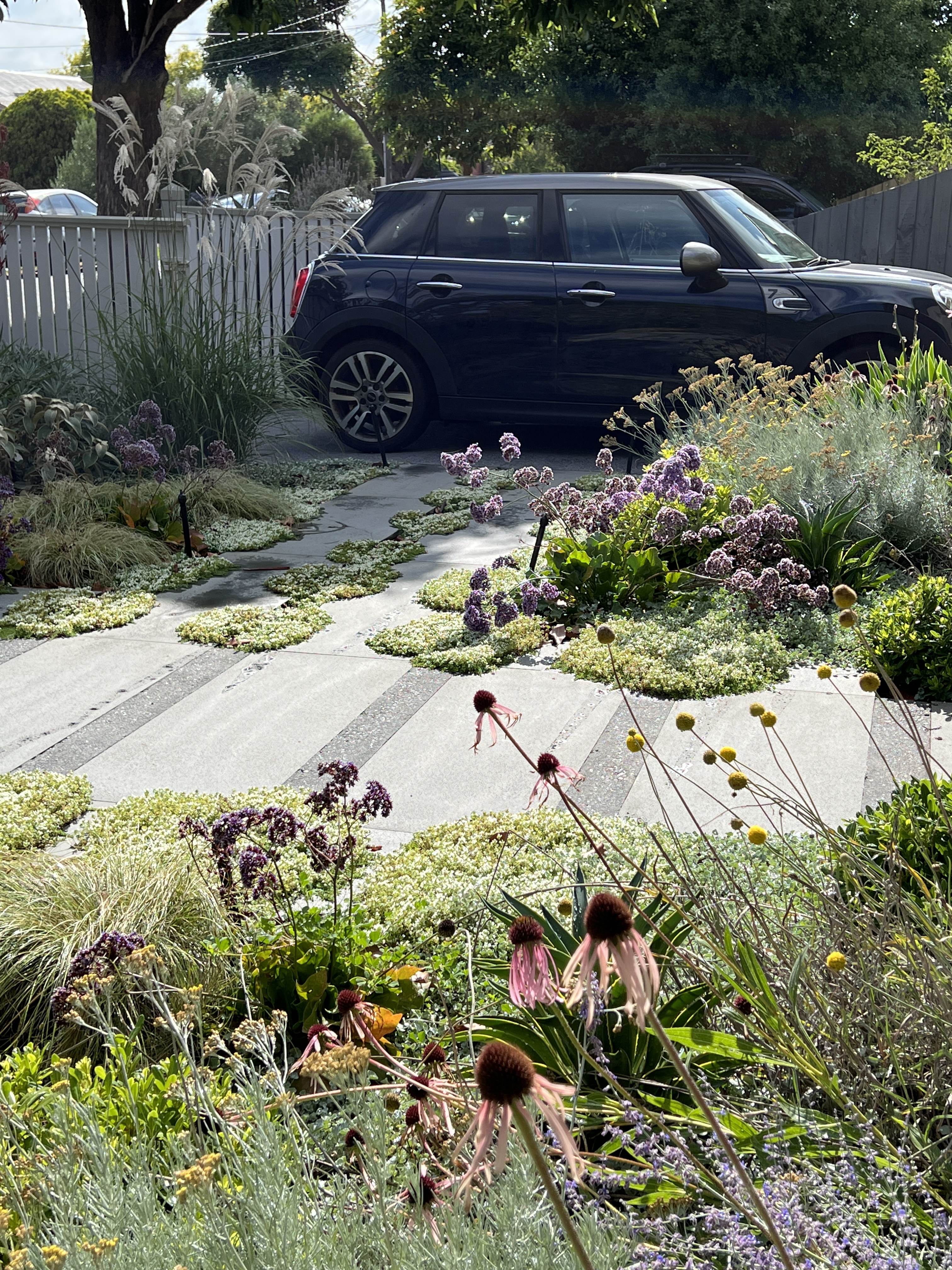
There are certain garden rules to avoid for a natural look in a front yard, including repetition and symmetry. 'Repetition of the same plants, such as a row of evergreens or one type of flowering bush, will also help create a more minimalist feeling to the space,' says landscape designer Amber Freda, however it can also feel too structured to feel natural.
Adam from Richardson & Associates Landscape Architecture suggests moving away from this "specimen planting" method for a natural front yard. 'Instead of planting individual specimens, group plants together in irregular drifts or clusters to create a more naturalistic appearance,' he suggests.
It's something that designer Renata Fairhall also didn't want to feel from the hardscaping in this small front yard. 'It was a small front garden and I needed to have access to the front door from the driveway on the left side, as well as access to utilities and the side of the house on the right,' she says. 'I didn’t want the garden to feel like a crisscross of paths, so I worked with strips that extended to different lengths across the garden creating a pleasing pattern, that also doubled as paths.'
4. Avoid traditional lawn
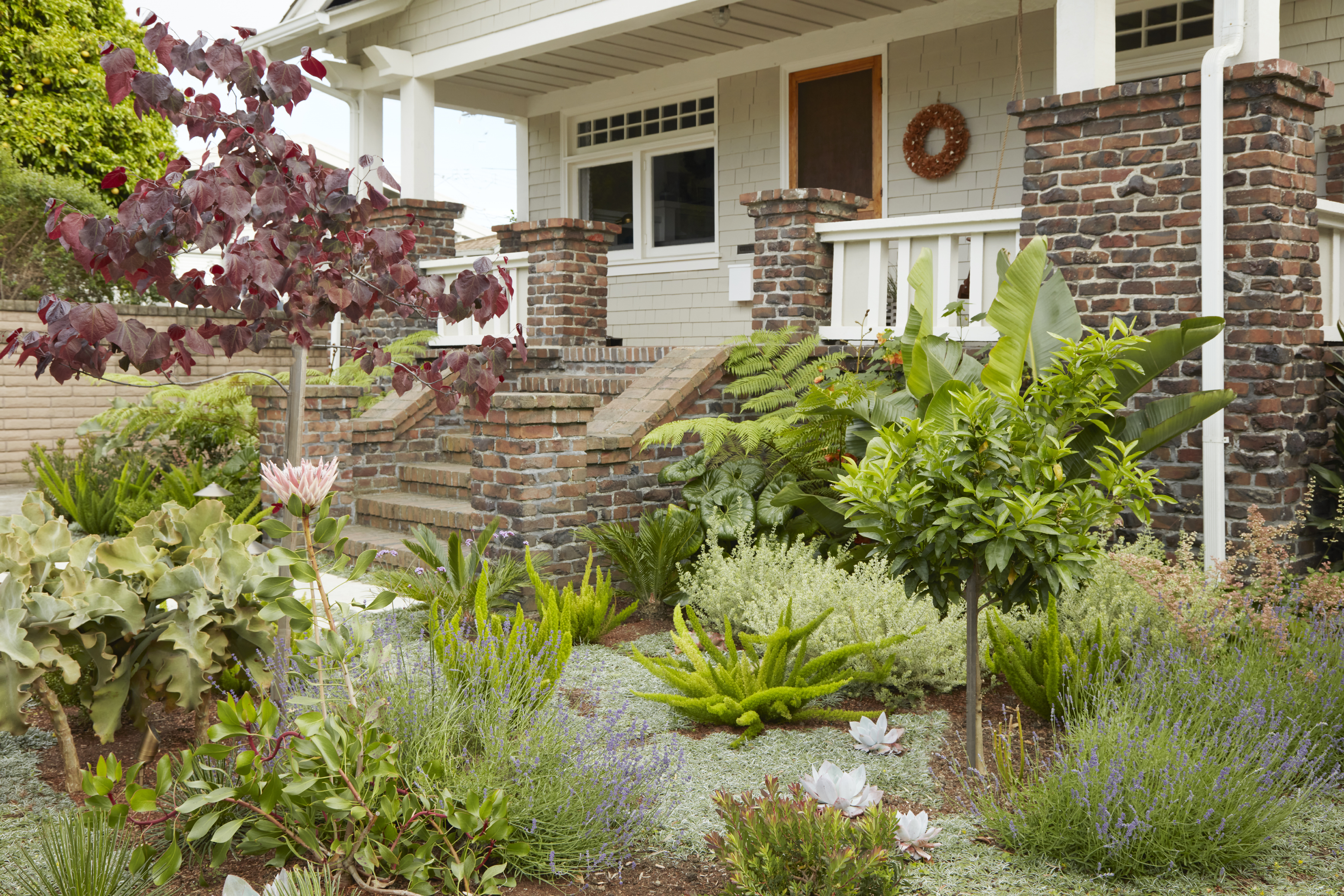
No grass front yards are a burgeoning landscaping trend, especially for those who have come to realize how water intensive expanses of grass are, and how little they provide in terms of environment for a biodiverse ecosystem.
Natural gardens with more varied planting lend themselves better to both these elements in most senses, and there are some great grass alternatives that, quite frankly, look prettier too, just as in this small yard by Pine House Gardens.
'It's a very small area and couldn’t accommodate a lawn, plus we like to avoid lawns where possible, to save water and to use more useful interesting plantings,' Leslie Bennett and Holly Kuljian from Pine House explain. 'Instead we used a small amount of Dymondia margaretae around the pavers so that there was reprieve from the dense planting in the center.'
5. Get the balance right

There is, as it turns out, a happy medium between a natural front yard and a more structured, formal garden. 'This little garden is a modern take on a traditional cottage garden which tended to consist of perennials, annuals and rustic shrubs that were generally wild in nature,' Steve from Cos Design explains. 'The clients were very clean and neat people so we added some order to this garden in the form of hedging and manicured clouds/spheres to reflect their personalities and likes and to pair back the wild.'
'We also need to ensure we had just enough wild to stay true to the era of the home and the brief so it was a fine line we had to navigate,' he explains. The natural front yard is all about texture, so as long as you embrace that fully in your design, the odd well-pruned shrub will bring a nice balance.
How do I make a front yard natural?
There are key areas to focus on when it comes to creating a natural front yard, that both focus on the aesthetics of the space and how it functions. Consider these ideas below as a starting point:
- Choose an alternative to lawn - classic lawns aren't only not great for wildlife, but they also need to be well-kept to look good, and keep the neighbors happy. Alternatives, such as clover lawns or tapestry lawns, have a more organic feel and are better for beneficial garden insects.
- Look at drought-tolerant planting - lawns are water intensive too, but replacing it with other plants that need constant watering may mean your curb appeal suffers in the hottest months of the year. Drought tolerant plants can help make a front yard more water-wise.
- Layer planting - think about how you create your flower beds in layers, mixing different heights, shapes and textures. Ornamental grasses are the one plant to add into the mix that will help "naturalize" a planting scheme based on more classic garden perennials and annuals.
- Embrace groundcover plants - not only will these plants make your beds feel fuller and more organic, they're a natural way to keep weeds at bay.







